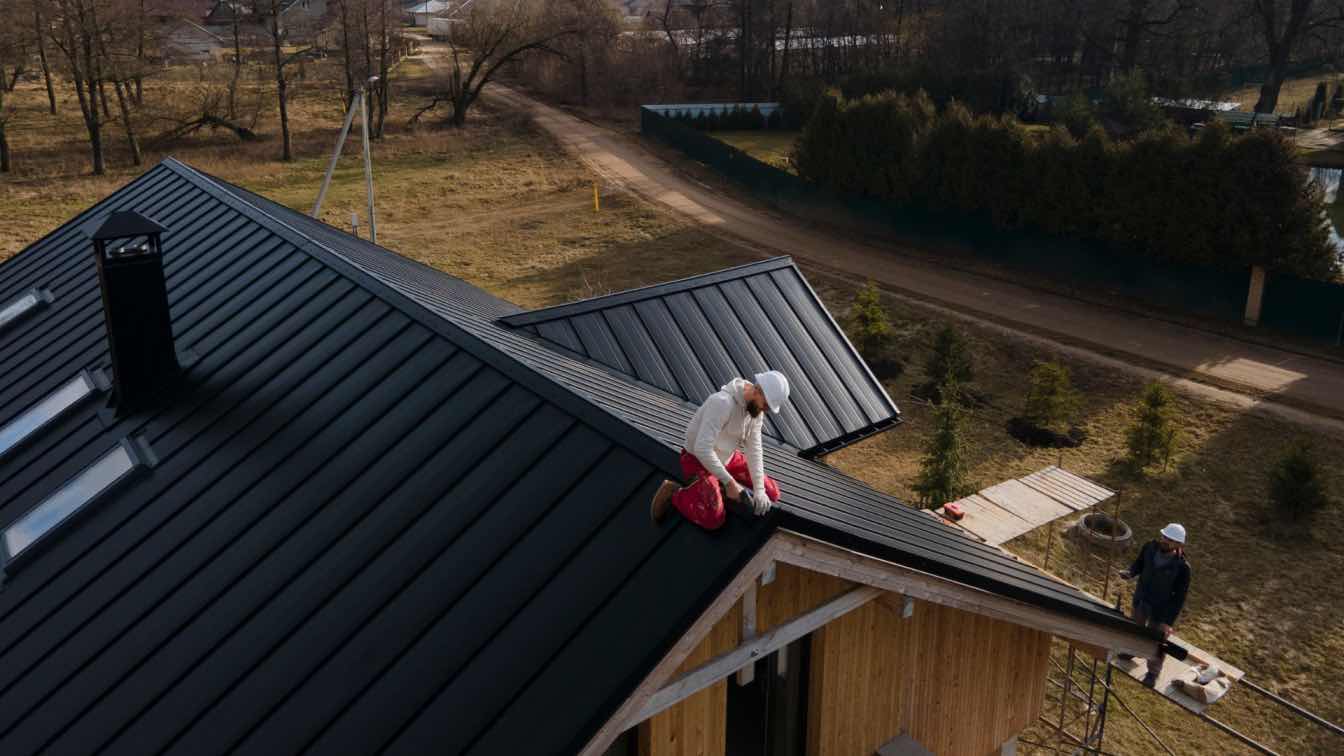Have you noticed Louisville going through some major changes lately? This doesn't just mean modern buildings or adaptive reuse projects. You’re talking about a deeper transformation reshaping the city's architectural identity.
You see, Louisville has dealt with challenges like businesses abandoning downtown and increased remote work. But now the city is rebounding thanks to a special group sparking revival: homebuyers! As Matt Rostosky, owner of https://www.cashofferky.com says, today's homebuyers are catalyzing an architectural metamorphosis in Louisville through demand for sustainable housing. And developers are responding.
Louisville's Architectural Identity in Flux
Classic Styles Reflecting History
First, check out Louisville's architectural roots. The city has stunning buildings honoring its history through intricate designs with rich backstories. You're talking stately Victorian homes in Old Louisville, graceful Federal row houses, and even some flashy Gilded Age structures like the ornate French Renaissance-style Louisville City Hall.
As Matt Rostosky of Cash Offer KY says, these homes dominate Old Louisville, America's largest Victorian neighborhood. Their bold towers and detailed brickwork make them true architectural artworks. But as Rostosky of Cash Offer KY says, preservation isn't about fossilizing the past. It means retaining heritage while upgrading homes for modern occupants.
Post-Industrial Deterioration
After its manufacturing heyday, Louisville endured some rough times. Factories closed, businesses abandoned downtown, and neighborhoods hollowed out. Buildings like empty warehouses wore the scars of time. But as Matt Rostosky points out, their rugged bricks and hardy bones inspired creative rebirth visions.
Striving For Innovation
Architects now balance preserving Louisville’s one-of-a-kind building heritage and inserting modern design. As Matt Rostosky says, the goal is sustaining the past while bettering livability and sustainability. Blending vintage charm with present-day convenience creates spaces fusing heritage with Louisville’s promising architectural destiny.
Downtown Decline Calls for Revitalization
Things haven't been too pretty for downtown Louisville recently. Pandemic impacts like remote work and rising crime depleted the area. Shops struggled with tumbleweeds instead of bustling customers. Office towers sat unoccupied, draining economic vibrancy.
Action was clearly needed to revive downtown. In 2021, Louisville Mayor Greg Fischer developed the Downtown Revitalization Team to generate ideas. As Rostosky says, their proposals included more green space, events, improved safety, and small business assistance. The Metro Government also announced pedestrian/bike friendly projects like Broadway All The Way.
But downtown still has a ways to go. Office occupancy plunged since COVID, leaving companies fighting to endure. City programs seek to lure new tenants with perks, but resuscitating the workforce poses a chicken-and-egg conundrum. As Rostosky of Cash Offer KY says, decoding this mystery is key to downtown’s resurgence.
Homebuyers Power Louisville’s Architectural Transformation
Here’s the exciting part: young professionals and empty nesters are coming to downtown Louisville's rescue! Their housing demand is compelling developers to transform faded old buildings into spectacular living spaces, like warehouses morphing into lofts with exposed brick walls and trendy shops nearby.
As Matt Rostosky says, millennial homebuyers especially desire downtown’s perks like nightlife, restaurants, and walkability. Once-neglected properties become hot commodities with the right vision. As Rostosky notes, homebuyer preferences shape Louisville’s architectural changes:
Residential Adaptive Reuse Trending
Adaptive reuse retains buildings’ heritage by modernizing function. As Matt Rostosky of Cash Offer KY explains, sensitive upgrades honor history while bettering livability. In Louisville, developers convert more offices and factories into housing through clever renovations upholding industrial heritage. Salvaged materials like timber or metal work blend with contemporary conveniences.
Sustainability Enhancements
Homebuyers prioritize small eco-footprints. Louisville architects answer with spray foam insulation, solar panels, HVAC upgrades and other green interventions. As Rostosky of Cash Offer KY says these sustainability restorations transform inefficient structures into energy-efficient showstoppers.
Lifestyle Amenities Abound
Beyond structural revamps, reimagined buildings offer perks catering to homebuyer wishes like fitness centers, rooftop decks, and smart home technology. Nearby attractions like bicycle paths, art galleries and restaurants connect residents to Louisville’s vibrant urban fabric. As Matt Rostosky says, location and walkability dominate home searches nowadays.
Preserving Historic Architecture
Several of Louisville’s historic neighborhoods face threats from decay, demolition and inappropriate alterations. However, architectural heritage holds great value. And local preservation groups like the Victorian Society work to preserve at-risk properties. Strategies involve listing landmarks on the National Register of Historic Places, creating local historic districts, and providing resources to revitalize dilapidated buildings.
Sensitive restorations retain beloved imperfections like chipped plaster or distressed wood surfaces that relay the passage of time. Layers of history permeate throughout the patina of salvaged materials. Architectural conservancies also offer guidance on upholding preservation goals during renovations. Replication of regional building techniques sustains ancestral construction methods.
Celebrating stewardship inspires future generations to carry on preservation victories. Heritage education and exhibits explain the importance of safeguarding Louisville’s enduring architectural DNA. As compassionate citizens seeking equitable development, the community must lead by example in elevating vibrant heritage.
Accessible Housing for All
While sustainable Kentucky housing and historic preservation are important, Louisville still suffers an affordable property crisis that disadvantages vulnerable residents. Building renovations present opportunities to expand affordable, accessible units - both downtown and in outlying neighborhoods.
Inclusionary zoning policies could mandate a portion of new construction includes affordable housing, while community land trusts allow nonprofits to develop units insulating residents from displacement. Converting excess commercial space and obsolete structures to apartments with subsidized rents also holds promise. Regardless of approach, compassionate development uplifting marginalized groups remains key to an equitable Louisville.
Downtown Community Building
Revitalizing downtown infrastructure means little without nurturing communal bonds. Holistic placemaking weaves physical sites, localized commerce and grassroots relationships into the social fabric binding society. Louisville deserves public havens where all delight in the beauty of shared spaces and recognize each person’s inherent dignity.
Grants and Funding
Creative placemaking grants help fund art and cultural programming that connects marginalized communities and sparks dialogue. Showcasing homegrown talent and traditions through markets, exhibitions and performances brings vibrancy while combating stereotypes.
Downtown gathering venues should offer reduced ticket rates enabling access for lower-income residents. Ultimately downtown thrives when all community members feel welcome, seen and heard.
Incentives for Greyfield Redevelopment
Instead of perpetuating urban sprawl, Louisville could focus growth inward by rehabilitating greyfield sites. These refer to economically obsolete or underutilized properties previously hosting business activity–for example, aging shopping malls with high vacancy rates.
Tax incentives and zoning flexibility could attract investors to transform greyfields into inclusive mixed-use neighborhoods. New zoning codes may permit adding housing, offices and parks to single-use retail sites no longer attracting tenants. Public-private partnerships also introduce models splitting financial risk among stakeholders to realize collective community goals.
Prioritizing infill development and greyfield rehabilitation curbs geographic inequalities dividing Louisville. Downtown redevelopment should avoid displacing existing residents while spurring economic mobility. With smart policy and fresh vision, Louisville’s abandoned properties can seed equitable urban revitalization.
A Vision for 2040
In 2040, downtown Louisville celebrates citizens of all backgrounds. Where barriers once divided neighborhoods, greenways connect cultural districts showcasing Louisville’s arts, local enterprise and heritage.
Downtown contains affordable housing threaded through blocks mixing boutiques, studios, microbreweries and offices. Near zero-emission buildings meet sustainability benchmarks thanks to renewable energy, responsible materials and retrofitted technology. Parks provide recreation while restoring local ecology. Vibrant streets invite walking, cycling and gathering for festivals and markets.
Linking people, past and place builds a compassionate city. Downtown stands revived as a model for resilient, equitable urbanism. Partnerships across sectors keep Louisville progressing while combating injustice. Here neighbors unite as one community bound by care for humanity and hope for future harmony. Downtown Louisville in 2040 welcomes all who seek lives of joy, purpose and belonging.
AI Supporting Preservation
Emerging technology like 3D laser scanning and AI image processing helps architects document, analyze and reconstruct heritage buildings. Detailed scans convert structures into digital models mapping each surface and irregularity. Powerful software processes scans to identify types of material degradation and structural damage.
Augmented Reality and Machine Learning
Armed with insights on building composition, engineers simulate and test interventions targeting compromised areas. Augmented reality then overlays remedies onto damaged zones to preview restoration outcomes. Algorithms even suggest appropriate materials and methods aligning with regional construction traditions.
AI further assists by generating photorealistic renderings envisioning revitalized buildings for fundraising and community buy-in. Machine learning categorizes architectural features based on images to customize design guidelines per building style. As preservation costs climb, advanced analytics tools boost efficient use of limited resources to carry cultural heritage into the future.
Louisville's Housing Shortage Crisis
With housing costs soaring, Louisville suffers a critical affordable housing shortage squeezing lower-income residents. A 2019 Housing Needs Assessment discovered over 31,000 units were required for households earning less than 30% the area median income. Yet existing stock met less than half this demand, forcing families into cost-burdened situations or homelessness.
Spiraling rents and inflation only intensify economic instability. Downtown specifically exhibits a deficit of units affordable to service workers enabling neighborhood operations like shops, hotels and offices. Without intervention, inequality divides Louisville between high-income resident “haves” redeveloping heritage buildings and low-income “have nots” exiled by unaffordability.
Compassionate development must expand downtown inventory tailored specifically to missing middle- and lower-income brackets. Subsidies, public housing, inclusionary zoning policies and non-profit partnerships present potential vehicles to uplift vulnerable community members. Though challenges abound, Louisville’s charitable spirit may yet chart an equitable path forward through the affordability crisis.
Closing Thoughts
Homebuyers are the surprise change agents driving Louisville’s architectural renewal. Their housing demands push developers to adaptively transform faded factories and offices into residences fusing industrial heritage with modern convenience.
Sustainable building innovations also boost efficiency. And amenities woven into historic buildings and surrounding neighborhoods enrich quality of life. This architectural evolution strengthens downtown while honoring Louisville’s distinctive building heritage.
Affordable housing shortages still require compassionate attention. But overall, driven by homebuyers, Louisville’s promising building makeover springs from a growing passion to honor the past while envisioning a brighter future. With revived landmarks transitioning into vibrant community hubs, the city’s architectural future takes shape.





